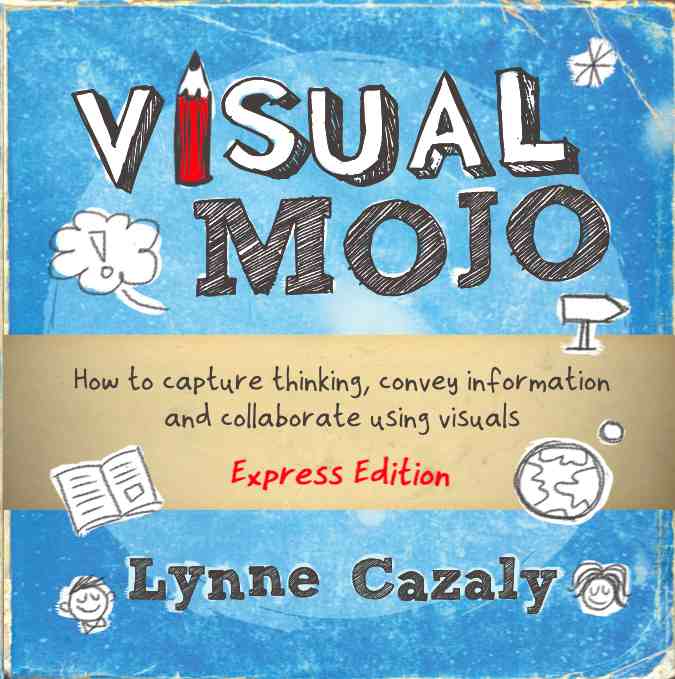Visual Mojo : How to capture thinking, convey information and collaborate using visuals
 Wednesday, December 18, 2019 at 10:12AM
Wednesday, December 18, 2019 at 10:12AM  The world has experienced a 'visual revolution' over the past decade.
The world has experienced a 'visual revolution' over the past decade.
We see more hand-drawn fonts in the font list on our computers, more hand-crafted signage in stores and more hand-created imagery in the media.
It's no surprise then that hand-drawn visuals are more engaging as they ignite the mirror neurons in our brains, firing up our interest and attention. If you worry you can't draw, I assure you it's less about the drawing and more about working out what you're trying to communicate.
We all need greater clarity among the crazy.
I wrote 'Visual Mojo: How to capture thinking, convey information and collaborate using visuals' in 2013 and it's even more relevant today. 'Visual Mojo' is a workshop in a book with space to draw and write in the book. I know we were 'in trouble' if we wrote in books when we were younger, but I want you to break some rules!
'Visual Mojo' will build your visual skills, your confidence, creativity ... and most of all the impact your communication has.
Q: Do you ever use hand-drawn visuals in your work?






















